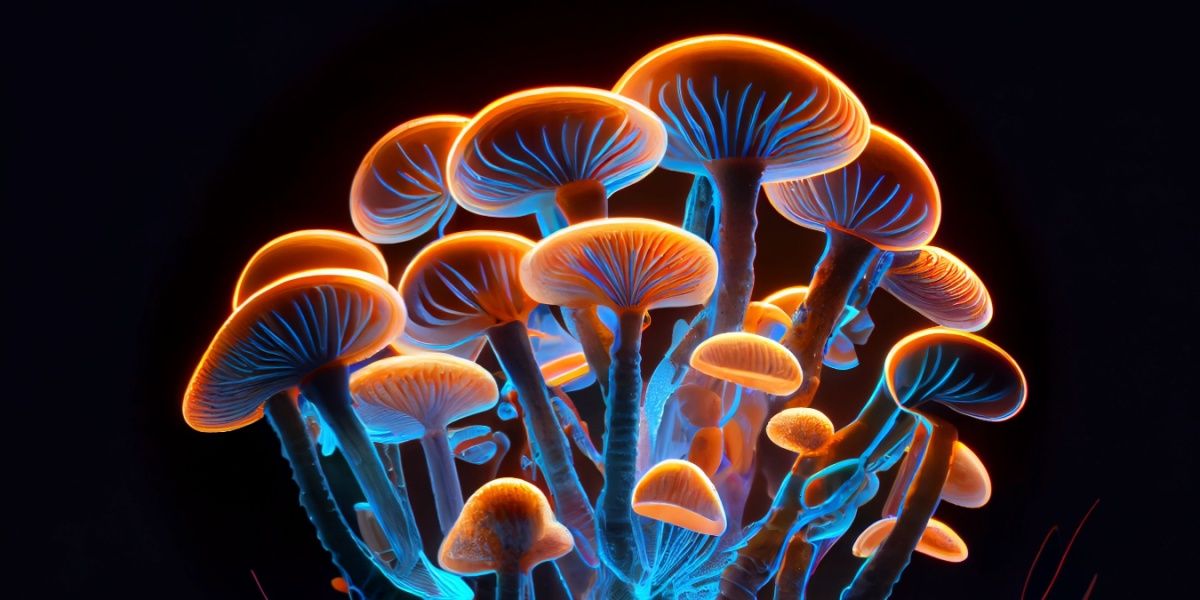LSD, a synthetic hallucinogen, is colorless, odorless, and tasteless and is usually consumed on tabs of colorfully printed blotter paper or liquid dispensed with an eye dropper.
- Today, LSD (also known as 'acid') is most commonly encountered in the form of tabs. These are small squares of absorbent blotter paper, typically 1/4-inch, each delivering one dose, usually between 100 and 200 micrograms (μg).
- Tabs on blotter paper are put into the mouth and held on or under the tongue for three to 15 minutes so the LSD enters the bloodstream. Some people chew the tabs for a few minutes instead.
- Unlike some drugs distinguished by their smell, LSD is odorless. Tabs may smell slightly of printer ink.
.jpg?v=1722503112)
What does LSD (acid) look like?
LSD appears in many forms. When first synthesized, it was a white crystalline powder. But it’s usually not sold and used in that state.
Tabs
Today, LSD is most commonly encountered in the form of tabs. These are small squares of absorbent blotter paper, typically 1/4-inch, each delivering one dose, usually between 100 and 200 micrograms (μg).
Usually, this blotter paper is printed with cartoons and drawings, often psychedelic or from pop culture. The use of cartoons on blotters has given LSD the slang name “Looney Tunes." Occasionally, tabs are blank, a form called “white on white.” Blotter designs have become an elaborate art form, with an informal museum—the Institute of Illegal Images—preserving over 33,000 different sheets of blotter paper.[1]
Sheets of this blotter paper are then soaked in a clear LSD-water/alcohol solution. The paper is perforated so the tabs can be separated easily. Tabs are sold separately or in strips or full sheets.
Other forms
LSD may also appear as:
- a colorless liquid in a small dropper bottle
- pills, sometimes colored and molded into shapes (eg. stars), with the smallest called “microdots.”
- gelatin tabs, produced when LSD is dissolved into water or alcohol and mixed with gelatin and food coloring. The mixture is then poured into a mold, which may have shapes. This form is colloquially called “windowpanes.”
- sugar cubes that liquid LSD has been dropped onto. You wouldn’t be able to tell the difference between LSD-laced sugar cubes and regular ones.
How is LSD taken?
LSD is taken in different ways depending on the form it comes in.
Tabs on blotter paper are put into the mouth and held on or under the tongue for three to 15 minutes so the LSD enters the bloodstream. Some people chew the tabs for a few minutes instead.
Tabs can also be swallowed, although the LSD will then be absorbed into the bloodstream through the stomach and won’t take effect as quickly.
With liquid LSD, people take one or two drops from an eye drop bottle and place them under their tongue so it’s absorbed. They may also drop it into liquid or food and ingest it that way.
Pills or microdots are swallowed. Gelatin tabs and sugar cubes laced with LSD are dissolved in the mouth.
What does LSD smell and taste like?
Unlike some drugs distinguished by their smell, LSD is odorless. Tabs may smell slightly of printer ink.
Even dogs, with smell receptors 10,000 times as accurate as ours, can’t smell LSD. However, police dogs may sniff out other drugs contaminating or masquerading as LSD or could feasibly be trained to smell chemical impurities from the LSD manufacturing process.[2]
Pure LSD crystals have a slightly bitter or metallic taste.[3] But the quantities consumed in liquid and tabs are so minuscule that you shouldn’t taste much at all, except for the paper and ink of the tab or possibly ethanol if alcohol has been used as the solvent in liquid LSD.
If you take “LSD” that tastes very bitter, metallic, or chemical and numbs your tongue and gums, it might not be LSD at all but another synthetic research chemical posing as it. One dangerous imposter identified by its sharply bitter taste is 25x-NBOMe, which can cause agitation, violent behavior, seizures, excited delirium, elevated heart rate, and body temperature, and has been linked to deaths.[4]
The danger of faux-LSD is summed up in the psychedelic community by a slogan: “If it’s bitter, it’s a spitter.”
How is LSD made?
LSD is a semi-synthetic chemical, produced by natural and man-made chemicals through a complex, even dangerous series of reactions. It isn’t chemistry that can be undertaken by amateurs.
Clandestine laboratories use different recipes to produce LSD. Their activities are illegal, so they're obviously tight-lipped about their methods. But the basic process is well-known: they react with lysergic acid with ammonia-derivative diethylamine.
Lysergic acid is a derivative of ergotamine, itself an alkaloid that comes from ergot. Ergot is a poisonous fungus that grows on rye and other grains and when ingested causes convulsions, gangrene, hallucinations, psychosis, and death. Ergot poisoning, or ergotism, was common in the medieval period, when it was known as St. Anthony’s Fire, and is speculated as the cause of various crazes throughout history including the Salem witch trials and the Dancing Plague of 1518.[5]
Due to ergot’s dangers, most underground chemists don’t start with the fungus itself but rather with two medications derived from it: ergometrine, used to stop heavy bleeding after childbirth, and the acute migraine drug ergotamine. Producing lysergic acid from these drugs is tricky and requires a skilled organic chemist with professional laboratory equipment. It’s therefore likely that most of the United States supply of LSD is manufactured at a few underground laboratories.[6]
How can I tell if someone is on LSD?
LSD produces sensory distortion and hallucinations but few physical effects for outsiders to detect.
However, a few hints may suggest someone has taken LSD.
- Dilated pupils: However, many drugs, including cocaine, meth, MDMA, and even the allergy pill Benadryl can produce the same effect.
- Lack of appetite: They may not eat all day while under the influence of LSD.
- They see and hear things that aren’t there.
- They describe mystical experiences.
- They lose track of time.
- They're disconnected from reality.
- They have a bad trip and become paranoid and frightened and have panic attacks.
These effects can last 12 hours or longer.
LSD can be abused: taken too frequently, to avoid problems, or despite adverse effects. However, tolerance to LSD builds after one dose and doesn’t subside for five or more days. During this period, even high doses won’t have an effect. Therefore, the person you’re concerned about likely won’t take LSD with discernible effects more than once per week.
Read here to learn more about how long LSD stays in your system.
Helping someone having a bad trip on LSD
Some people find the hallucinations and sensory distortion elicited by LSD anxiety-inducing or even terrifying. They may experience confusion, disorientation, paranoia, panic attacks, and even psychosis. They may feel trapped or alone or act in irrational, dangerous, or even self-harming ways.
Because LSD’s effects are so long-lasting, bad trips can be emotionally challenging. Some users describe bad trips as among the worst feelings of their life.
Harm reduction service The Zendo Project offers guidance on delivering what they call “psychedelic first aid” to someone experiencing a bad trip.
- Approach the person with kindness and acceptance, tell them they are safe and whatever they’re experiencing is ok. Invite them to share what they’re experiencing.
- Get the person to a safe space—a quiet, calm, and comfortable environment, away from hazards and sources of sensory input such as bright lights, loud music, and crowds.
- Ask permission before touching the person.
- Offer them blankets and water.
- There are three situations in which you should always seek outside help: serious mental health episodes, potential violence, and medical emergencies.
- Help them integrate back into society after the experience winds down.[7]


-guide-detail.jpg?v=1722503085)

-guide-detail.jpg?v=1756808816)